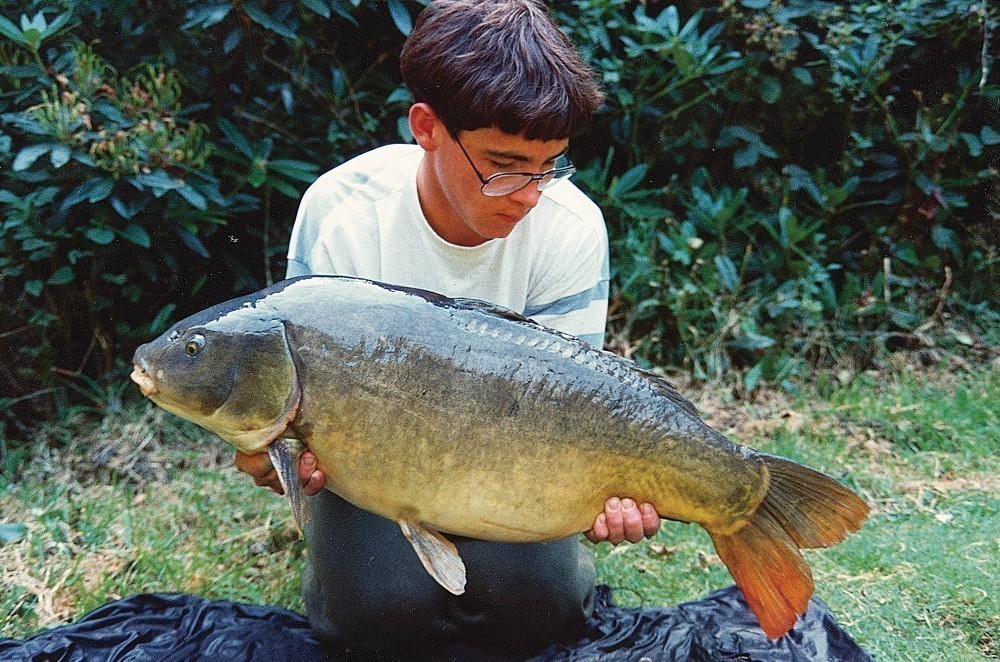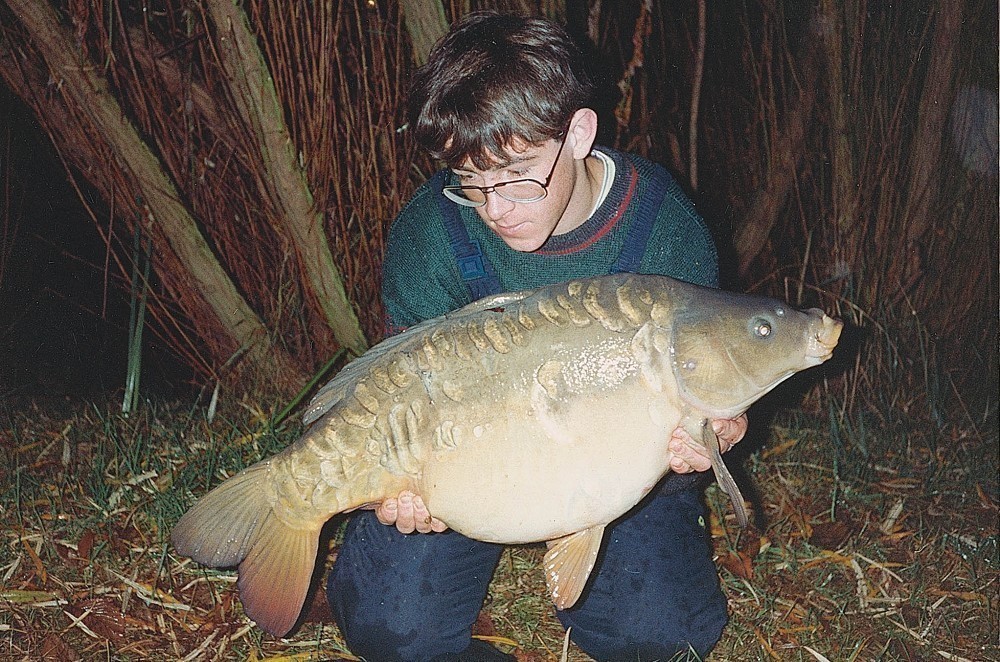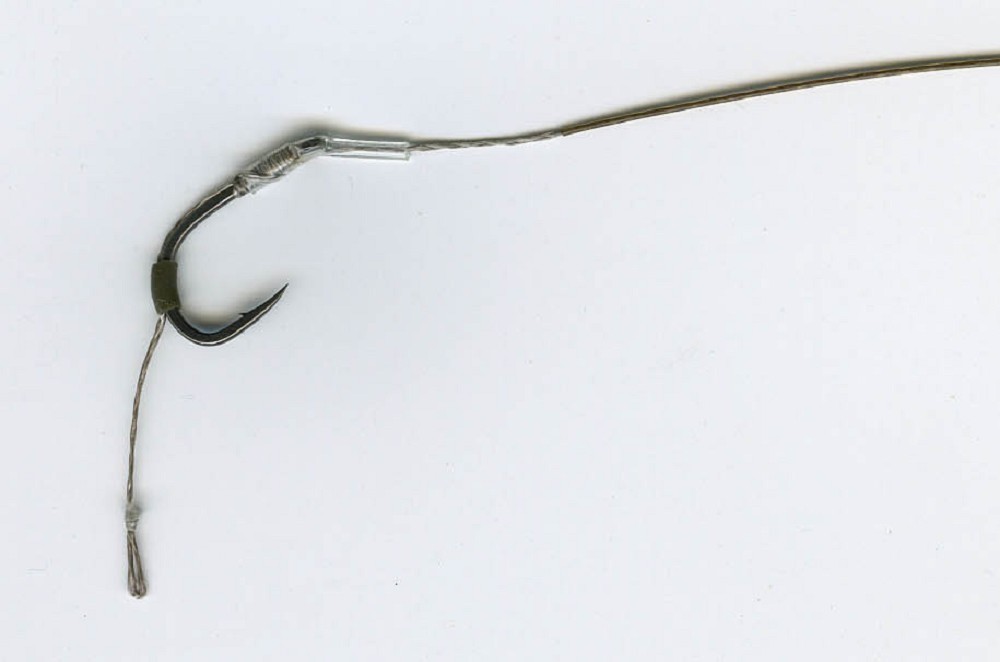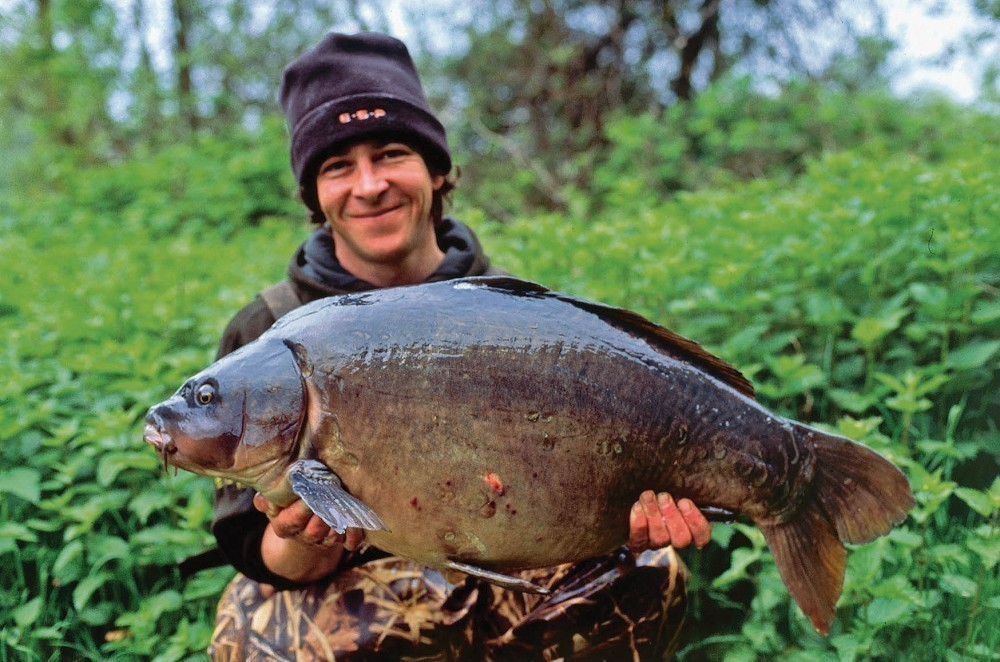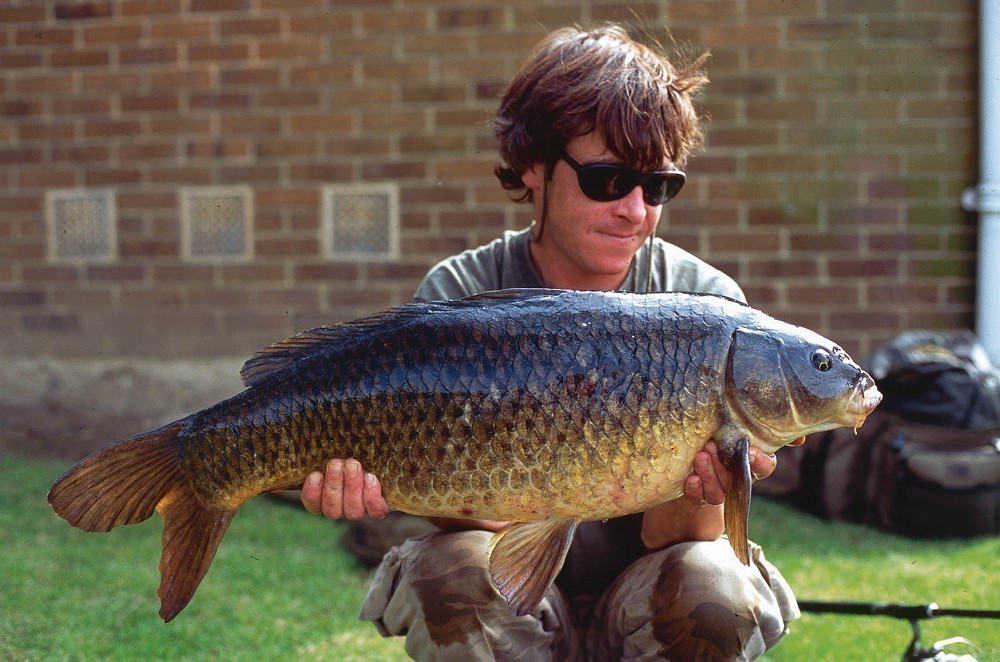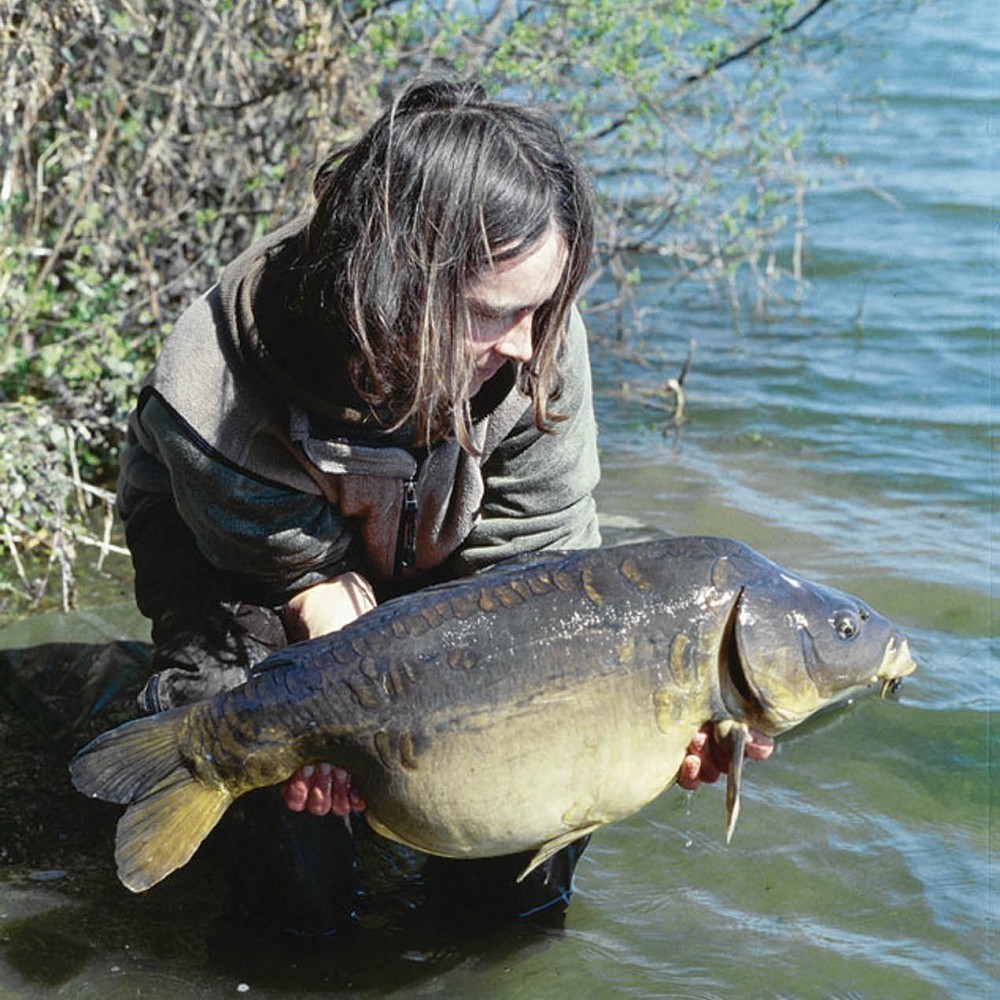CARPology Classic: Terry Hearn - On The Deck
The world’s hottest carp angler spills the beans about his bottom bait rigs…
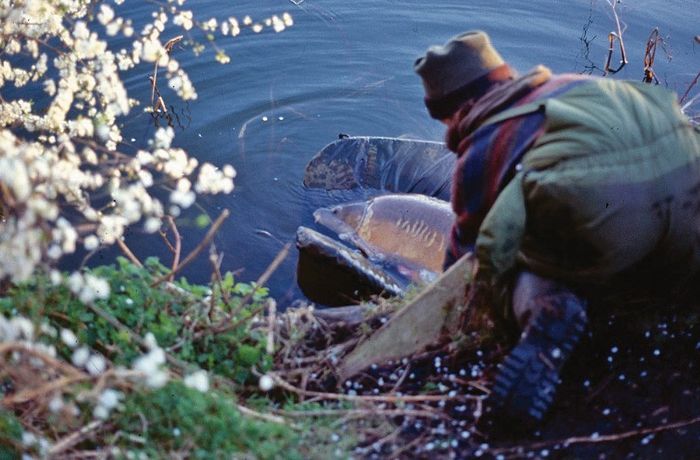
hen it comes to fishing popped-up boilies, the Hinged Stiff Link and the Chod Rig are the two rigs you’re most likely to find me using, particularly when I’m targeting a particular big ’un, as I have so much confidence in their hooking and holding power.
Both presentations are pretty ‘butch’, with nice tough hooklink materials and big strong hooks, and you only have to look at them to see that there’s a good chance of anything hooked ending up in the net.
So, I’m more than happy with my pop-up rigs, and I’ve got to say that if I can get away with using them, then I will. However, what about when I want to fish a bait tight to the deck? What sort of rigs do I go for then? Though nowadays I’m very happy with my bottom bait rigs, it’s not always been the case, and so for this one I’m going to go back, way back, as for sure it’s my bottom bait presentations that have seen the most changes over the years.
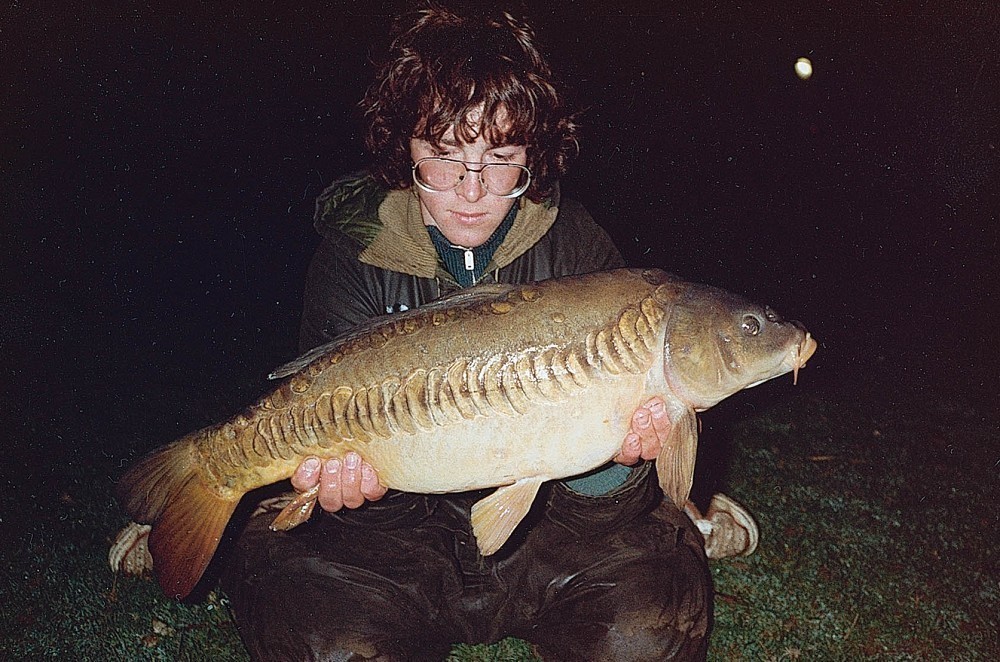 In the early days we used to use 18-inches of nylon with a size 8 Super Specialist. It worked well enough, though
In the early days we used to use 18-inches of nylon with a size 8 Super Specialist. It worked well enough, thoughThe Old Days
The bottom bait rigs that friends and I used to use whilst fishing the shallow, silty lakes in the Royal Parks were ever so simple, and were generally formed from around 18-inches of 7lb Sylcast with a size 8 Drennan Super Specialist hook tied on to the end with a Whipping Knot. The left over tag of line was then passed back through the eye, with a small loop tied in the end for a Hair. Nice and simple, and fishing them with our little one ounce leads it used to work a treat. We caught loads like it, and so that’s pretty much how my bottom bait presentation stayed for some time.
We thought our rigs were great, and being as we were using nice chemically etched hooks they probably were pretty good for the time, as this was way before there was such a large abundance of decent hooks on the market. Back then, if you weren’t on a Drennan or a Kamatsu hook then you were quite likely to be using something that was blunt in comparison, and so without really realising it we were already on to an edge.
If we were fishing somewhere that required stronger tackle then we’d just step everything up a bit, going for a size 6 Super Specialist tied to a length of 11lb Sylcast, which back then was seen as absolute brute tactics. My how things have changed.
It was some time before I got into fishing with shorter hooklinks, and I remember that at the same time I started shortening my hooklinks I also started using the Rotary Rig, with the backstop placed a few inches back up the line. Most of the places I was fishing back then were shallow and silty, which is why in the past we’d always taken the light lead and long hooklink approach, but looking at the way the Rotary Rig worked we thought it would be ideal. The way it worked meant that there was no need for a long hooklink anymore, as the hooklink was able to slide up the main line, resting on top of the silt rather than being dragged down into it.
Around the same time I started using another hook from the Drennan stable, the faithful old Carbon Specimens in either an 8 or a 6, and just for a little extra holding power I used to bend the eyes in slightly with a pair of pliers. This wasn’t done to make the hook turn better, but of course that’s exactly what it achieved, and coupled with the shorter hooklinks, which by now were down to around six-inches, it proved to be a very good rig. I even used to slide a small piece of 0.5mm silicone tubing over the eye and knot, and although I only ever done this to tidy the rig up, again this slight extension no doubt helped the hook to flip over in the carp’s mouth.
Of course we weren’t using leadcore leaders back then, and so there was always the problem of whatever you’d tied the hooklink on to damaging the main line just above the lead, especially during a long fight. Originally we started off using swivel beads, i.e. a swivel with a plastic bead moulded around one end, but these were still a bit on the dodgy side and it wasn’t long before we were looking for an alternative. In the finish it was a small hard plastic bead with another hole moulded on to the side of it that we found ideal for the job. I know that’s a bit vague but I just can’t remember what they were called, although you should be able to see what I mean from the picture.
Those beads were only made from plastic, but seeing as we were only ever tying light mono hooklinks to them we never ever had them fail on us. If you tried to tie a braided hooklink to them then they’d cut through every time, but with the stretchy mono they were fine. In fact, I carried on using those same rigs right up until my days at Yateley, which is where I first started to get problems with my usual bottom bait rigs, as all of a sudden I was fishing for carp in a whole new set of environments.
Basically, my nice subtle rigs with fine wired hooks and mono hooklinks were no longer up to the job. One of the first fish I ever hooked on them was in The Pig Swim on the Copse Lake, and within seconds I was reeling in a hook that looked more like a baiting needle, and so it wasn’t long before I was having a rethink.
Hook Points
Obviously the hooks needed to be stronger, but also the mono that I was forming my rigs from also had to be changed for something stronger and more abrasion resistant. I finished up using Kryston Silkworm and Owner Cutting Points for a while, and though it all looked good and I caught fish, it could never match the effectiveness of my old mono rigs with my bent Carbon Specimen hooks. At the time this was largely put down to the fact that everything was being made from less subtle components, but really I think the main reason that mono was as good as it was because of its inherent stiffness and the way it left the eye of the hook, at an angle, just as we’d make sure it was doing today with the aid of shrink tubing.
Of course, as the range of hooks and hooklink materials available grew in number, I tried loads of different combinations, but mono was a “no-no”, as it just wasn’t up to the job, and I always steered clear of tubing as I thought it made my bottom bait rigs look too cluttered. If I did use it, then it was generally just a little piece of silicone covering the knot, but it was clear that the longer shanked hooks with an in-turned eye always seemed that much more effective. The use of the relatively new coated braids also helped a lot, making tangles more a thing of the past, and I’m sure their stiffness added to my bottom bait rigs effectiveness. The braid though was still supple where it left the hook eye, which knowing what I know now made my bottom bait rigs far easier for the carp to deal with.
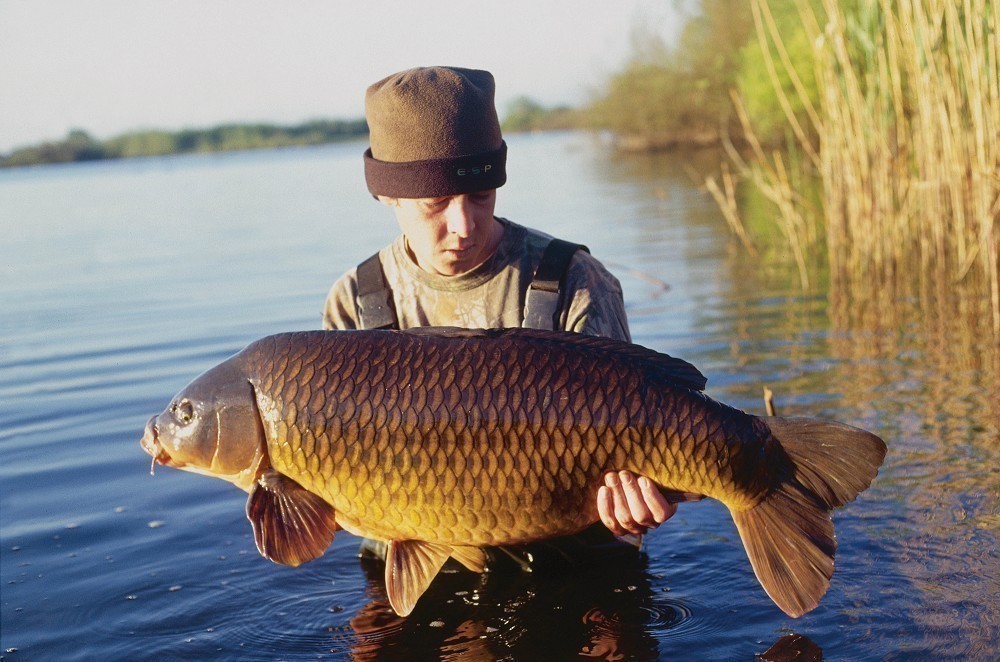 A bottom bait straight from the bag, but I’m sure bending the eye inwards on my Stiff Rigger hook helped nail this beauty
A bottom bait straight from the bag, but I’m sure bending the eye inwards on my Stiff Rigger hook helped nail this beautyI’m sure that the main reason I still enjoyed fair success with my bottom bait presentations was because of how fussy I am with my hook points. I’m sure that others are nowhere near as fussy, and that’s a serious edge in itself. Even today I can guarantee that if I were to walk around a lake asking people to reel in I’d find that many of them were casting out hooks that aren’t sharp enough. I know that may sound a little mad but believe me, it’s the truth.
Every so often I’ve come across a batch of hooks that are nice and consistent with virtually everyone out the packet being usable, but I’ve got to tell you that’s pretty rare, and for the most part I’m looking at throwing at least a couple away out of every packet. In fact, with one of my most favourite hooks of all, I used to be looking at around fifty percent sharp, and fifty percent ‘dulled’, which means if I wasn’t fussy enough to check them, I would have been cutting my chances down by half. If you want to do that then just take the one rod with you. I’ve said it over and over again, but to a carp angler the hook point should be number one concern.
Today's Presentation
Thankfully I’m glad to say that I’m very happy with my bottom bait presentation today, and over the past couple of years I’ve made sure to include a small piece of shrink tubing shrunk down to create an angle at the hook’s eye. As well as this shrink tube I also trap the Hair right round on the bend with a small piece of 0.5mm silicone tubing, which I believe to be just as important as an aid in helping the hook to flip over and take hold, even more so with the added weight of a bottom bait on the Hair.
Friends had been telling me to try fishing my bottom bait rigs in this way for a long, long time before I eventually gave in, and in the finish it was at one of the angling shows, chatting to Danny and Damo from Korda that made me sit up and take notice. We were doing a talk and they were showing their bottom bait rigs to the punters, but they weren’t the only ones impressed with how well the hook turned, and I made my mind up there and then that I’d have it on my own rods next trip out.
Funny enough, someone else who’d been telling me to add a nice piece of shrink tubing on to my hooks was Alan Welch, the main influence behind the Stiff Links, and so that was three good anglers all telling me I needed to make some changes. I was fishing Pingewood near Reading at the time, and the first time I added a piece of shrink tubing to my rigs I hooked and landed three in a single sitting. Next trip out and more of the same. In fact, over the following few weeks I went on to land pretty much everything I hooked. Suddenly my confidence in my bottom bait boilie presentation had grown to that of the Stiff Links, and almost two years on I’ve kept them exactly the same, using either ESP Big T’s or, if the bottoms gravelly, the beaked pointed Korda Wide Gapes, both in the 6’s.
As for actual hooklink material I’ve been using ESP’S Striptease for the same length of time, always in the 20lb strain, and with the stuff I’ve been using I just cant fault it in anyway. I can honestly say that nowadays I’m as happy with my bottom bait presentation as I am with my pop-ups, and that really means a lot, as in the past I’ve often held back from using bottom baits just because of the worry of poor hook holds. All in the past now I’m glad to say, so thanks to Danny, Damo and Al for convincing me to make the changes.



